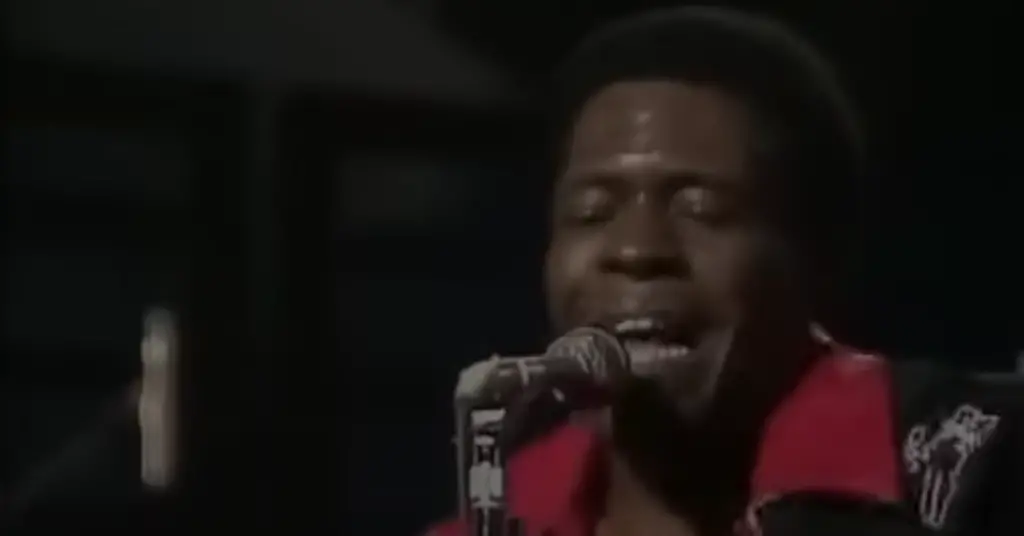The Hoodoo Man Speaks: How Junior Wells Brought Me Face-to-Face with the Real Blues
If the blues had a heartbeat, I swear Junior Wells was its pulse.
I’ll never forget hearing “Hoodoo Man Blues” for the first time. The groove was dark, slinky, and street-smart. The harp sounded like it had been dragged through the alleys of Chicago and came back testifying. And that voice—laid-back but dangerous. Like a guy who’d lived a life and didn’t feel the need to explain it.
From that moment, I was hooked. Junior Wells didn’t just play the blues. He walked it. Breathed it. Fought with it and made peace with it all in the same verse.
From Memphis Roots to Chicago Royalty
Born in Memphis in 1934 and raised in Arkansas, Junior Wells (born Amos Wells Blakemore Jr.) made his way to Chicago as a young teen—and quickly found himself part of the electric blues revolution.
He learned harmonica from none other than Little Walter, and by the early ’50s he was already a force—playing with Muddy Waters’ band and cutting tracks that would shape the sound of Chicago blues for decades.
But it was the ’60s when Junior came into full bloom. Alongside guitarist Buddy Guy, he recorded Hoodoo Man Blues, an album that redefined modern blues—gritty, funky, and as real as it gets.
His Style: Cool, Raw, and Streetwise
Junior wasn’t flashy. He didn’t wail or howl. He grooved. He oozed confidence and charisma, like a blues James Brown crossed with a South Side hustler.
His harmonica playing was razor-sharp and expressive—some of the best ever recorded. He didn’t just blow through scales. He made the harp talk. Laugh. Weep.
His vocals? Half-sung, half-spoken, always full of attitude. He’d slide into a line like he was telling you a secret. And when he did shout, it was because he meant it.
And then there was his presence. Onstage, he wore sharp suits, dark shades, and carried himself like he owned the joint. Because, honestly, he did.
The Records That Got Me Under the Spell
If you’re new to Junior Wells, there’s a lot to dig into. But these are the albums that pulled me down the rabbit hole:
- 🎤 Hoodoo Man Blues (1965) – THE masterpiece. If you only listen to one Chicago blues album in your life, make it this one. Raw, spacious, hypnotic.
- 🔥 South Side Blues Jam (1971) – Looser, jammy, and soulful. Feels like you’re eavesdropping on a killer session.
- 💥 It’s My Life, Baby! (1966) – High-energy and full of punch. His live cuts from this era are electrifying.
- 🎸 Play the Blues (with Buddy Guy) (1972) – A dynamic, funky, and raucous ride. These two had chemistry.
- 🕶️ Live at Theresa’s 1975 – Stripped down, intimate, and full of Junior’s playful side. A glimpse into the real scene.
He also made killer appearances with The Rolling Stones, Van Morrison, and Carlos Santana, holding his own every time.
Junior Wells Live: Swagger and Soul
Seeing Junior Wells live was like going to a sermon in a juke joint. I was lucky enough to catch him once in the ’90s, not long before he passed. He came out slow, cool as ever, and lit into “Messin’ With the Kid” like he’d written it yesterday.
He didn’t dance much. He didn’t need to. He owned the air around him. Every song was a story. Every harp solo felt like a punchline. And by the end of the show, he had the whole crowd in his hand—without ever raising his voice.
Why Junior Still Speaks So Loudly
In a genre full of legends, Junior Wells is the blues with its collar popped and shades on. He didn’t just sing about heartbreak—he sang about survival, hustle, and pride. He made the blues modern, urban, and impossibly cool.
He was a bridge between generations, a mentor to Buddy Guy, and an influence on everyone from Mick Jagger to John Popper. You can hear his fingerprints in funk, soul, and hip-hop. He wasn’t just playing licks—he was laying grooves that still move people today.

Where to Start If You’re New
Let me get you on the good foot:
- 🎧 Hoodoo Man Blues – Don’t even think—just play it.
- 🎤 South Side Blues Jam – For the after-hours vibe.
- 🎸 Play the Blues – For funk, fire, and Buddy Guy magic.
- 🎥 YouTube: Search “Junior Wells live Montreux” or “Messin’ with the Kid 1993” and watch the legend do his thing.
More at Junior Wells Discography on AllMusic
Junior Wells didn’t need to shout. He just grooved harder than anyone else. He made you feel like you were in on something—like you were part of the story. And that’s what makes him not just a blues legend, but a blues lifeline.
Thank You
We appreciate your time and dedication to reading our article. For more of the finest blues guitar music, make sure to follow our Facebook page, “I Love Blues Guitar”. We share exceptional selections every day. Thank you once again for your continued support and readership.


Facebook Comments